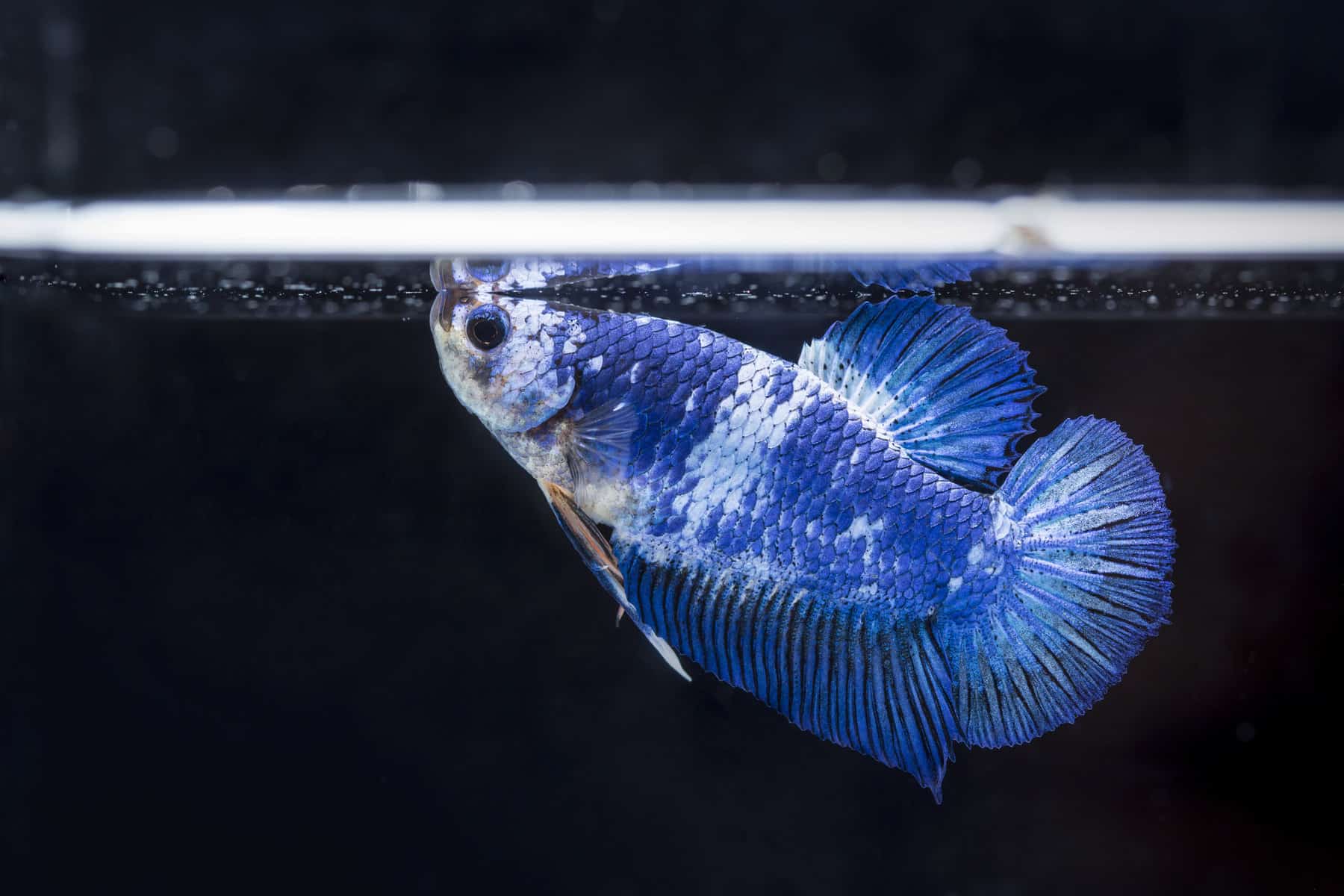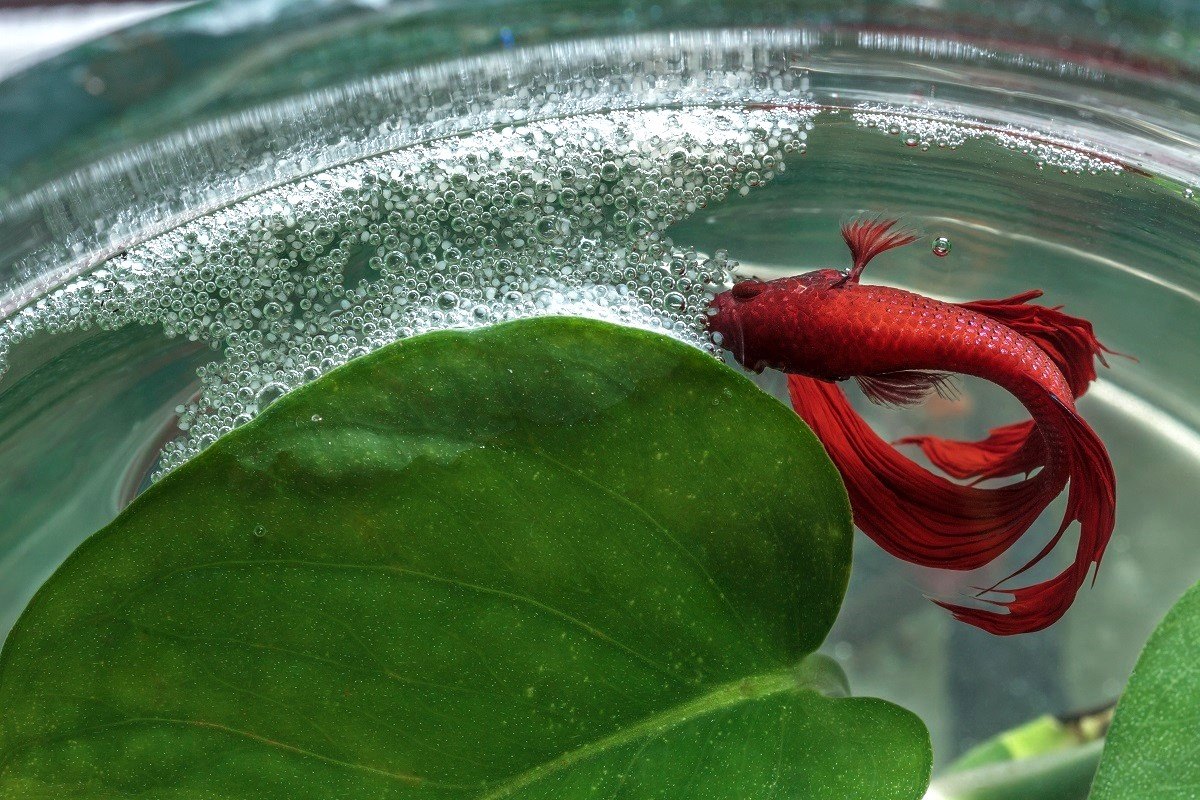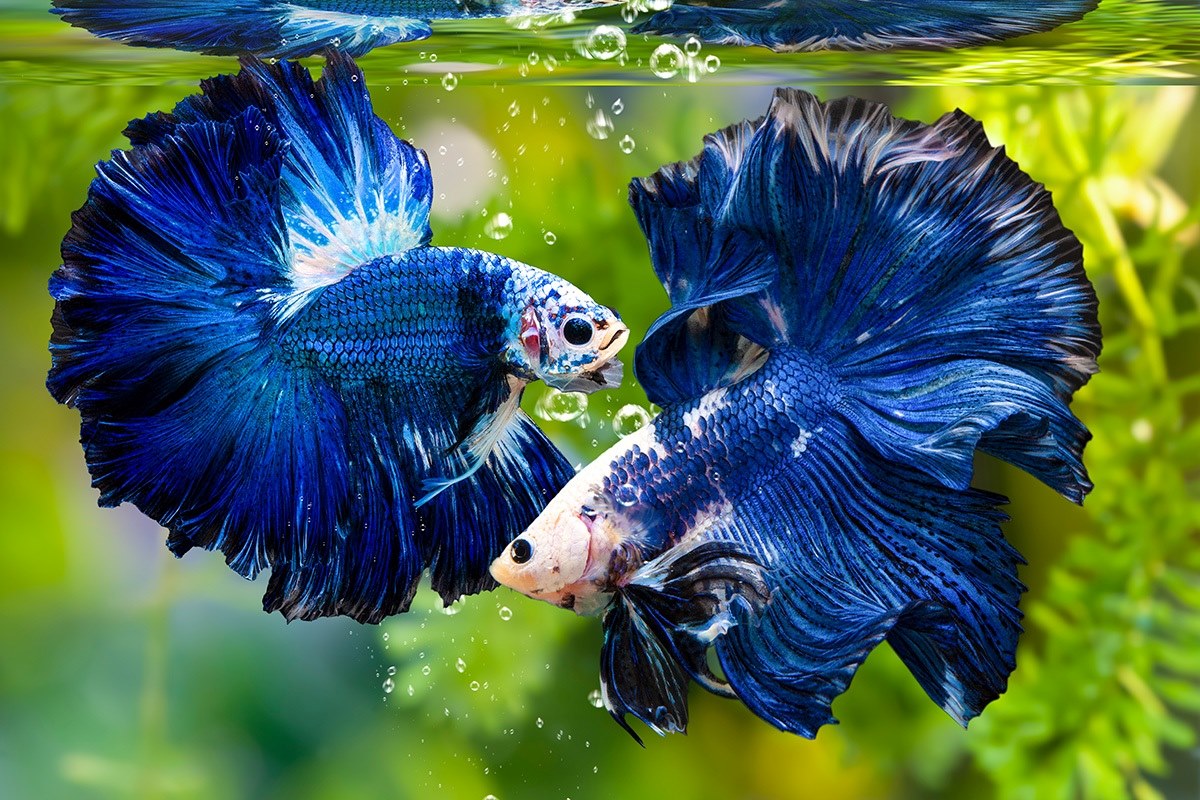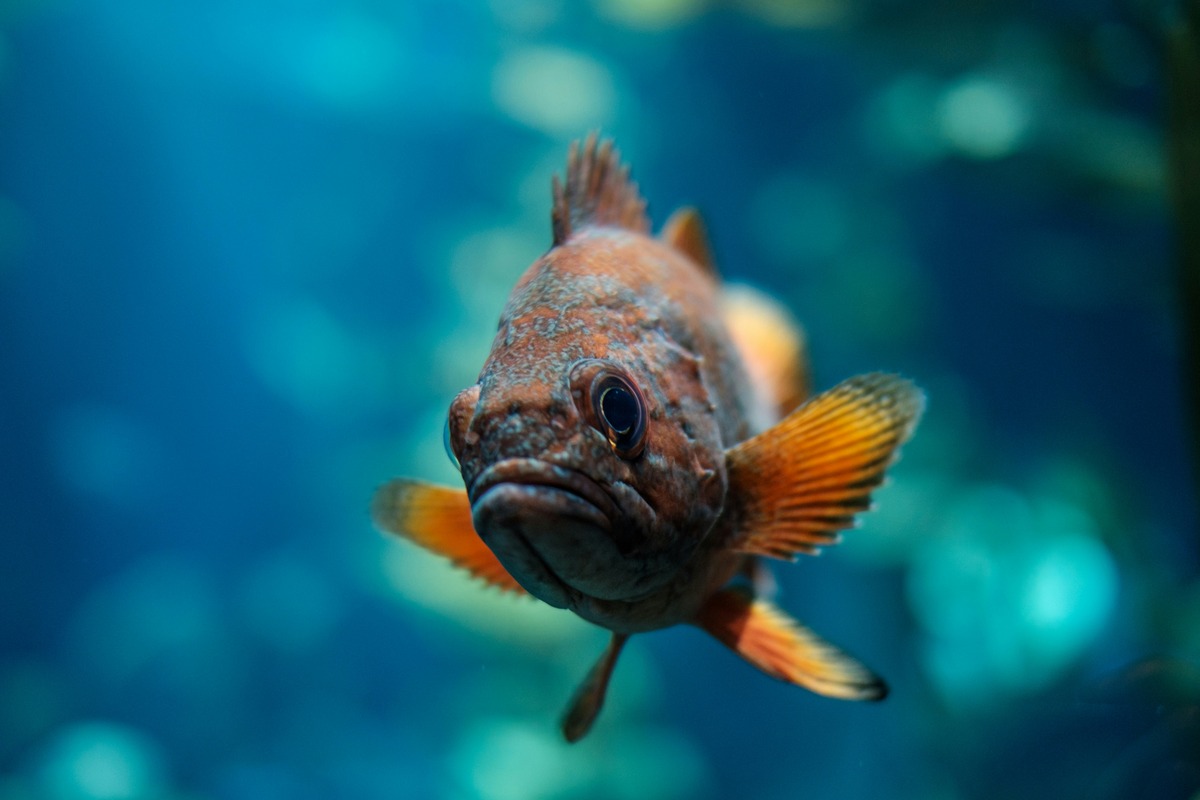Home>Pets & Animals>The Surprising Reason Your Betta Fish Is Glued To The Top Corner Of The Tank


Pets & Animals
The Surprising Reason Your Betta Fish Is Glued To The Top Corner Of The Tank
Published: February 8, 2024
Discover why your betta fish is constantly at the top corner of the tank. Learn how to create a comfortable environment for your pet. Helpful tips for pet owners.
(Many of the links in this article redirect to a specific reviewed product. Your purchase of these products through affiliate links helps to generate commission for Noodls.com, at no extra cost. Learn more)
Table of Contents
Introduction
Have you ever noticed your betta fish spending an unusual amount of time at the top corner of its tank, seemingly fixated on that particular spot? This behavior might seem perplexing at first, but there's a fascinating reason behind it. As a betta fish enthusiast, understanding your pet's behavior is crucial for ensuring its well-being and happiness.
In this article, we'll delve into the intriguing world of betta fish behavior, shedding light on why your betta may exhibit this peculiar swimming pattern. By exploring the various factors that influence betta fish behavior, we aim to equip you with the knowledge needed to create an optimal environment for your aquatic companion.
So, if you've ever wondered why your betta fish seems glued to the top corner of its tank, prepare to uncover the surprising reasons behind this behavior. Let's embark on a captivating journey into the underwater realm of these vibrant and captivating creatures, where every behavior holds a clue to their unique needs and preferences.
Understanding Betta Fish Behavior
Betta fish, also known as Siamese fighting fish, are renowned for their vibrant colors and flamboyant fins, but their behavior is equally captivating. These mesmerizing creatures exhibit a wide range of behaviors, each conveying valuable insights into their well-being and state of mind.
One of the most intriguing aspects of betta fish behavior is their tendency to linger at the top corner of the tank. This behavior often raises questions and concerns among pet owners, prompting them to seek a deeper understanding of its underlying causes.
Betta fish are labyrinth fish, meaning they possess a specialized organ called the labyrinth organ, which enables them to breathe atmospheric air. This unique adaptation allows bettas to survive in oxygen-deprived waters, such as the shallow rice paddies and stagnant ponds of their native Southeast Asian habitats. As a result, bettas have a natural inclination to surface for air, often leading them to linger near the top of the tank.
Furthermore, betta fish are highly territorial by nature, a trait that has been honed through centuries of selective breeding for fighting prowess. In the wild, male bettas fiercely defend their territories, engaging in aggressive displays to ward off intruders. This territorial instinct remains deeply ingrained in domesticated bettas, influencing their behavior in confined spaces.
Additionally, betta fish are known for their curious and observant nature. They are keenly attuned to their surroundings and often exhibit inquisitive behaviors, such as investigating tank decorations, interacting with tank mates, and closely monitoring changes in their environment. This heightened awareness can lead them to frequent specific areas of the tank, such as the top corner, as they assess their surroundings and assert their territorial boundaries.
Understanding these fundamental aspects of betta fish behavior is essential for providing them with a conducive and enriching environment. By recognizing their natural tendencies and adapting their tank setup to accommodate these behaviors, pet owners can ensure that their bettas thrive in captivity.
In the subsequent sections, we will delve deeper into the environmental factors that influence betta fish behavior, shedding light on the crucial elements that contribute to their well-being and overall happiness. Let's embark on a journey to unravel the intricacies of creating an ideal habitat for these captivating aquatic companions.
The Importance of Tank Conditions
Creating and maintaining optimal tank conditions is paramount when it comes to caring for betta fish. The environment within the tank directly impacts the physical health and behavioral patterns of these captivating aquatic beings. From water quality to temperature and oxygen levels, every aspect of the tank's conditions plays a crucial role in ensuring the well-being and vitality of betta fish.
Water quality stands as a cornerstone of betta fish care. The water in the tank must be clean, free from toxins, and well-circulated to support the delicate respiratory systems of these labyrinth fish. Regular water changes, filtration, and the use of water conditioners are essential practices to uphold pristine water quality. Additionally, maintaining proper pH levels and monitoring ammonia and nitrite levels are vital for creating a healthy aquatic environment.
The temperature of the water is another critical factor that significantly influences betta fish behavior and overall health. Betta fish are native to tropical regions, and as such, they thrive in warm water conditions. Maintaining a stable water temperature within the ideal range of 78-80°F (25-27°C) is crucial for supporting their metabolic functions, immune system, and overall vitality. The use of aquarium heaters and thermometers is indispensable for regulating and monitoring water temperature, ensuring that it remains within the optimal range.
Furthermore, the presence of adequate oxygen levels in the tank is essential for the well-being of betta fish. As labyrinth fish, bettas have the unique ability to breathe atmospheric air, allowing them to thrive in low-oxygen environments. However, ensuring proper oxygenation of the tank water is imperative to support their respiratory needs and prevent stress-related behaviors. Efficient aeration systems, surface agitation, and the strategic placement of live plants contribute to maintaining optimal oxygen levels within the tank, promoting the health and vitality of betta fish.
In essence, the significance of tank conditions cannot be overstated in the realm of betta fish care. By meticulously attending to water quality, temperature regulation, and oxygenation, pet owners can create a thriving aquatic habitat that not only sustains the physical well-being of their bettas but also fosters natural and vibrant behavioral patterns. Understanding and addressing the intricacies of tank conditions is a fundamental aspect of providing exceptional care for these captivating aquatic companions.
Oxygen Levels in the Tank
The presence of adequate oxygen levels in the tank is crucial for the well-being and vitality of betta fish. As labyrinth fish, bettas possess a specialized respiratory organ known as the labyrinth organ, which enables them to breathe atmospheric air. This unique adaptation allows bettas to thrive in oxygen-deprived waters, such as the shallow rice paddies and stagnant ponds of their native Southeast Asian habitats. While their ability to breathe atmospheric air grants them a remarkable survival advantage, maintaining optimal oxygen levels within the tank is paramount for supporting their respiratory needs and overall health.
Efficient aeration and oxygenation of the tank water are essential to ensure that betta fish can access the oxygen they require to thrive. A well-functioning aquarium air pump, equipped with air stones or diffusers, facilitates the circulation of air throughout the water, promoting the dissolution of oxygen into the aquatic environment. This aeration process not only enhances oxygen levels but also contributes to the removal of carbon dioxide, maintaining a healthy balance of gases essential for the well-being of betta fish.
Furthermore, surface agitation plays a pivotal role in oxygenation. By creating ripples and surface movement, either through the use of a gentle filter outflow or strategically positioned air stones, surface agitation promotes the exchange of gases at the water's surface, facilitating the absorption of atmospheric oxygen. This natural process mimics the oxygen-rich conditions found in the betta fish's native habitats, ensuring that they can engage their labyrinth organs to access the vital oxygen they need to thrive.
Live aquatic plants also play a significant role in enhancing oxygen levels within the tank. Through the process of photosynthesis, aquatic plants release oxygen, contributing to the oxygenation of the water. Additionally, the presence of live plants can help maintain water quality by absorbing carbon dioxide and reducing the accumulation of organic waste, creating a harmonious and oxygen-rich aquatic ecosystem that supports the well-being of betta fish.
By diligently attending to the oxygenation of the tank water, pet owners can create a thriving aquatic environment that promotes the health and vitality of their betta fish. Monitoring oxygen levels, promoting surface agitation, and incorporating live plants are integral practices that contribute to sustaining optimal oxygenation within the tank, fostering natural and vibrant behavioral patterns while ensuring the well-being of these captivating aquatic companions.
The Role of Water Temperature
The water temperature within the betta fish tank plays a pivotal role in shaping their behavior, overall health, and physiological functions. As native inhabitants of the tropical regions of Southeast Asia, betta fish are acclimated to warm water conditions, and maintaining an optimal water temperature is essential for supporting their metabolic processes, immune system, and overall well-being.
Betta fish are ectothermic, meaning their body temperature is regulated by the temperature of their surrounding environment. Thus, the water temperature directly influences their metabolic rate, digestion, and overall activity levels. A stable and appropriate water temperature is crucial for ensuring that bettas can effectively metabolize food, maintain robust immune responses, and exhibit their natural behaviors.
The ideal water temperature range for betta fish typically falls between 78-80°F (25-27°C). Within this temperature range, bettas are able to thrive, showcasing vibrant colors, active swimming patterns, and engaging in their natural behaviors. Deviations from this optimal temperature range can have profound effects on betta fish, impacting their health and behavior.
Low water temperatures can lead to a slowdown in metabolic processes, compromising the immune system and leaving bettas susceptible to stress and illness. In colder waters, bettas may exhibit lethargic behavior, reduced appetite, and diminished vibrancy in their coloration. Prolonged exposure to low temperatures can also increase the risk of respiratory infections and other health issues, posing significant threats to the well-being of betta fish.
On the other hand, excessively high water temperatures can also have detrimental effects on betta fish. Elevated temperatures can accelerate metabolic rates, leading to increased oxygen consumption and potential stress on the fish's respiratory system. Furthermore, high temperatures can diminish water oxygen levels, further exacerbating respiratory challenges for bettas. Heat stress can manifest in behaviors such as gasping at the water's surface, erratic swimming, and heightened aggression, signaling the need for immediate intervention to mitigate the adverse effects of overheating.
Maintaining a stable water temperature within the optimal range is essential for supporting the well-being and natural behaviors of betta fish. The use of reliable aquarium heaters, equipped with thermostats, enables pet owners to regulate and maintain consistent water temperatures, creating a conducive environment for their aquatic companions. Regular monitoring of water temperature, especially during seasonal changes, is crucial for promptly addressing any fluctuations and ensuring the continued health and vitality of betta fish.
In essence, the role of water temperature in the care of betta fish cannot be understated. By prioritizing the maintenance of optimal water temperature conditions, pet owners can create a thriving aquatic habitat that supports the vibrant health and natural behaviors of these captivating aquatic companions.
The Impact of Water Quality
The impact of water quality on betta fish cannot be overstated, as it serves as a cornerstone of their overall health and well-being. Pristine water quality is essential for creating a thriving aquatic environment that supports the vibrant colors, energetic behaviors, and longevity of these captivating aquatic companions. Understanding the profound influence of water quality on betta fish underscores the significance of diligent maintenance and regular monitoring of the tank's aquatic parameters.
Water quality encompasses a multitude of factors, including the absence of toxins, proper pH levels, and the management of ammonia and nitrite levels. Regular water changes, typically ranging from 25-50% of the tank volume every one to two weeks, are crucial for removing accumulated waste, uneaten food, and other debris that can compromise water quality. Additionally, the use of high-quality filtration systems, equipped with mechanical, biological, and chemical filtration components, aids in maintaining pristine water conditions by removing impurities and promoting beneficial bacterial colonization.
Maintaining appropriate pH levels within the recommended range of 6.5 to 7.5 is vital for supporting the physiological functions and overall health of betta fish. Fluctuations in pH can induce stress and adversely impact the well-being of bettas, making it imperative to monitor and stabilize pH levels through proper water testing and the use of pH-adjusting products when necessary.
Furthermore, the management of ammonia and nitrite levels is critical for preventing toxic buildup within the tank. Ammonia, a byproduct of fish waste and decaying organic matter, is highly toxic to betta fish and can lead to severe health issues if left unchecked. Similarly, elevated nitrite levels pose significant risks to the well-being of bettas, impairing their ability to effectively transport oxygen and leading to distressing health complications. Regular water testing and the implementation of effective filtration and water conditioning practices are essential for mitigating ammonia and nitrite accumulation, safeguarding the health and vitality of betta fish.
In essence, the impact of water quality on betta fish extends far beyond mere aesthetics, profoundly influencing their physical health, behavioral patterns, and overall quality of life. By prioritizing meticulous water quality management, pet owners can create a pristine aquatic habitat that not only sustains the well-being of their bettas but also fosters natural and vibrant behaviors, showcasing these captivating aquatic companions in their full splendor.
The Relationship Between Stress and Behavior
The intricate relationship between stress and behavior profoundly influences the well-being and vitality of betta fish. As sentient beings, bettas are susceptible to stress, which can manifest in a myriad of behavioral patterns that serve as poignant indicators of their emotional and physical states. Understanding the nuanced interplay between stressors and behavioral responses is paramount for providing exceptional care and fostering a harmonious environment for these captivating aquatic companions.
Stressors in the betta fish's environment can encompass a wide array of factors, ranging from suboptimal tank conditions and aggressive tank mates to sudden changes in their surroundings. When confronted with stress, bettas exhibit a spectrum of behaviors that offer valuable insights into their internal state. Common stress-induced behaviors include lethargy, loss of appetite, fin clamping, erratic swimming, and heightened aggression towards tank mates or even their own reflections. Additionally, stressed bettas may display pallor in their vibrant colors, signaling a departure from their usual vibrancy and vitality.
The impact of stress on betta fish extends beyond behavioral manifestations, encompassing physiological and immunological repercussions. Prolonged exposure to stress can compromise the immune system of bettas, rendering them more susceptible to diseases and infections. Furthermore, stress-induced behaviors, such as decreased appetite and lethargy, can lead to nutritional deficiencies and diminished overall well-being.
Mitigating stress and promoting a serene and enriching environment is essential for nurturing the holistic well-being of betta fish. By meticulously attending to the tank conditions, minimizing potential stressors, and providing enriching stimuli, pet owners can create a tranquil haven that supports the emotional and physical equilibrium of their bettas. Implementing proper tank maintenance, ensuring compatible tank mates, and offering stimulating enrichment activities, such as the introduction of live plants and strategically placed tank decorations, can alleviate stress and promote natural, vibrant behaviors in betta fish.
In essence, the relationship between stress and behavior in betta fish underscores the profound impact of environmental factors on their well-being. By recognizing the subtle cues of stress and proactively addressing potential stressors, pet owners can cultivate a nurturing environment that allows bettas to thrive, showcasing their captivating colors and engaging in their natural behaviors with vibrancy and vitality.
Conclusion
In conclusion, the seemingly perplexing behavior of betta fish lingering at the top corner of their tanks holds a myriad of captivating explanations rooted in their intrinsic nature and environmental interactions. Understanding the underlying reasons behind this behavior empowers pet owners to create an optimal habitat that supports the well-being and natural vibrancy of these captivating aquatic companions.
Betta fish behavior is a tapestry woven with threads of territorial instincts, curious observations, and the unique respiratory adaptations of labyrinth fish. Their penchant for lingering at the top corner of the tank is a manifestation of their innate tendencies to surface for atmospheric air, assert territorial boundaries, and keenly observe their surroundings. By recognizing and honoring these natural inclinations, pet owners can tailor their tank setups to accommodate these behaviors, fostering a harmonious environment for their bettas to thrive.
The significance of tank conditions, encompassing water quality, temperature regulation, and oxygenation, cannot be overstated in the realm of betta fish care. Pristine water quality, optimal temperature ranges, and adequate oxygen levels are foundational pillars that sustain the physical health and vibrant behaviors of bettas. Diligent maintenance of tank conditions, coupled with the provision of enriching stimuli and stress-mitigating practices, creates a sanctuary where bettas can express their natural behaviors with vitality and grace.
The profound interplay between stress and behavior further underscores the delicate equilibrium within the underwater realm of betta fish. By recognizing the nuanced cues of stress and proactively addressing potential stressors, pet owners can cultivate an environment that nurtures the emotional and physical well-being of their bettas, allowing them to showcase their captivating colors and engage in their natural behaviors with vibrancy and vitality.
In essence, the captivating allure of betta fish behavior, including their tendency to linger at the top corner of the tank, serves as a testament to the intricate tapestry of their nature. By delving into the realms of their behavior, understanding the nuances of their environmental needs, and embracing the art of attentive care, pet owners embark on a journey that celebrates the vibrant beauty and captivating essence of these enchanting aquatic companions.














